Complete Solutions to Linked Comprehension of chapter KINEMATICS-1 of Class 11 book with complete answers and questions
| Class 11 | PHYSICS |
| Chapter | KINEMATICS-1 |
| CENGAGE PHYSICS | Linked Comprehension |
| Number Of Questions | 30 |
| Academic Year | 2023-24 |
The dispacement of a body is given by `4s=M +2Nt^(4)`, where `M` and `N` are constants.
The velocity of the body at any instant is .
View SolutionThe dispacement of a body is given by `4s=M +2Nt^(4)`, where `M` and `N` are constants.
The velocity of the body at the end of `1 s` from the start is .
View SolutionA body is dropped from the top of the tower and falls freely.
The distance coverd by it after `n` seconds is derctlyproportional to .
View SolutionA body is dropped from the top of the tower and falls freely.
The distance coverd in the `nth` second is proportilnal to .
View SolutionA body is dropped from the top of the tower and falls freely.
The velocity of the body after `n` seconds is proportional to .
View SolutionA car accelerates from rest at a constant rate `alpha` for some time, after which it decelerates at a constant rate `beta,` to come to rest. If the total time elapsed is t seconds. Then evalute (a) the maximum velocity reached and (b) the total distance travelled.
View SolutionA car accelerates from rest at a constant rate `alpha` for some time, after which it decelerates at a constant rate `beta,` to come to rest. If the total time elapsed is t seconds. Then evalute (a) the maximum velocity reached and (b) the total distance travelled.
View SolutionA body is moving with uniform velocity of `8 ms^-1`. When the body just crossed another body, the second one starts and moves with uniform acceleration of `4 ms^-2`. The time after which two bodies meet will be :
View SolutionA body is moving with uniform velocity of `8 m s^(-1)`. When the body just crosses another body, the second one starts and moves with uniform acceleration of `4 m s^(-2)`.
The distance comered by the second body when they meet is .
View SolutionA body is allowed to fall from a height of `10 m`. If the time taken for the first `50 m` is `t_(1)` and for the remaining `50 s`,is `t_(2)`.
Which is correct?
View SolutionA body is allowed to fall from a height of `10 m`. If the time taken for the first `50 m` is `t_(1)` and for the remaining `50 s`,is `t_(2)`.
The ratio `t_(1)` and `t_(2)`. Is nearly .
View SolutionA body is allowed to fall from a height of `10 m`. If the time taken for the first `50 m` is `t_(1)` and for the remaining `50 s`,is `t_(2)`.
The ratio of time to reach the ground and to reach first half of the distance is .
View SolutionA body is dropped from a balloon moving up with a velocity of `4 m s^(-2) ` when the balloon is at a height of `12.5 m` from the ground.
The height of the body after `5 s` from the ground is `(g=9.8 ms^(-2))`.
View SolutionA body is dropped from a balloon meving up wigh a velocity of `4 m s^(-2) ` when the balloon is at a height of `12.5` m from the ground.
The distance of separation between of separation between the body and the balloon after `5` is.
View SolutionA bus starts moving with acceleration `2 ms^-2`. A cyclist `96 m` behind the bus starts simultaneously towards the bus at a constant speed of `20 m//s`. After what time will he be able to overtake the bus ?
View SolutionA bus starts moving with acceleration `2 ms^(-2)`. A cyclist `96 m` behind the nus starts simultaneously towards the bus at a constant speed of `20 m s^(-1)`
After some time the bus will be left behind. If bus continues moving with the same acceelration, after what time from the begining, the bus will overtake the cyclist ?
View SolutionA car is moving towards south with a speed of `20 m s^(-1)`. A motorcycst is moving towards east with a speed of `15 m s^(-1)`. At a crttain instant, the motorcyclistis due south of the car and is at a distance of `50 m`from the car.
The shortest distance between the motorcyclist and the car is.
View SolutionA car is moving towards south with a speed of `20 m s^(-1)`. A motorcycst is moving towards east with a speed of `15 s^(-1)`. At a certtain instant, the motorcyclistis due south of the car and is at a distance of `50 m` from the car.
The time after which they are closest to each other.
View SolutionTwo particles `A` and `B` are initially `40 m` apart, `A` is behind `B`. Particle `A` is moving with uniform velocity of `10 m s^(-1)` toward `B`. Particle `B` starts moving away from `A` with constant acceleration of `2 m s^(-1)`.
The time which there is a minimum distance between the two is .
View SolutionTwo particles `A` and `B` are initially ` 40 m`apart, `A` is behind `B`. Particle `A` is moving with uniform velocity of `10 m s^(-1)` towared `B`. Particle `B` starts moving away from `A` with constant acceleration of `2 m s^(-1)`.
The minimum distance between the two is .
View SolutionThe velocity-time graph of a particle in straight line motion is velocity-time graph of a particle in straight line motion is shown in. The particle starts its motion from origin.
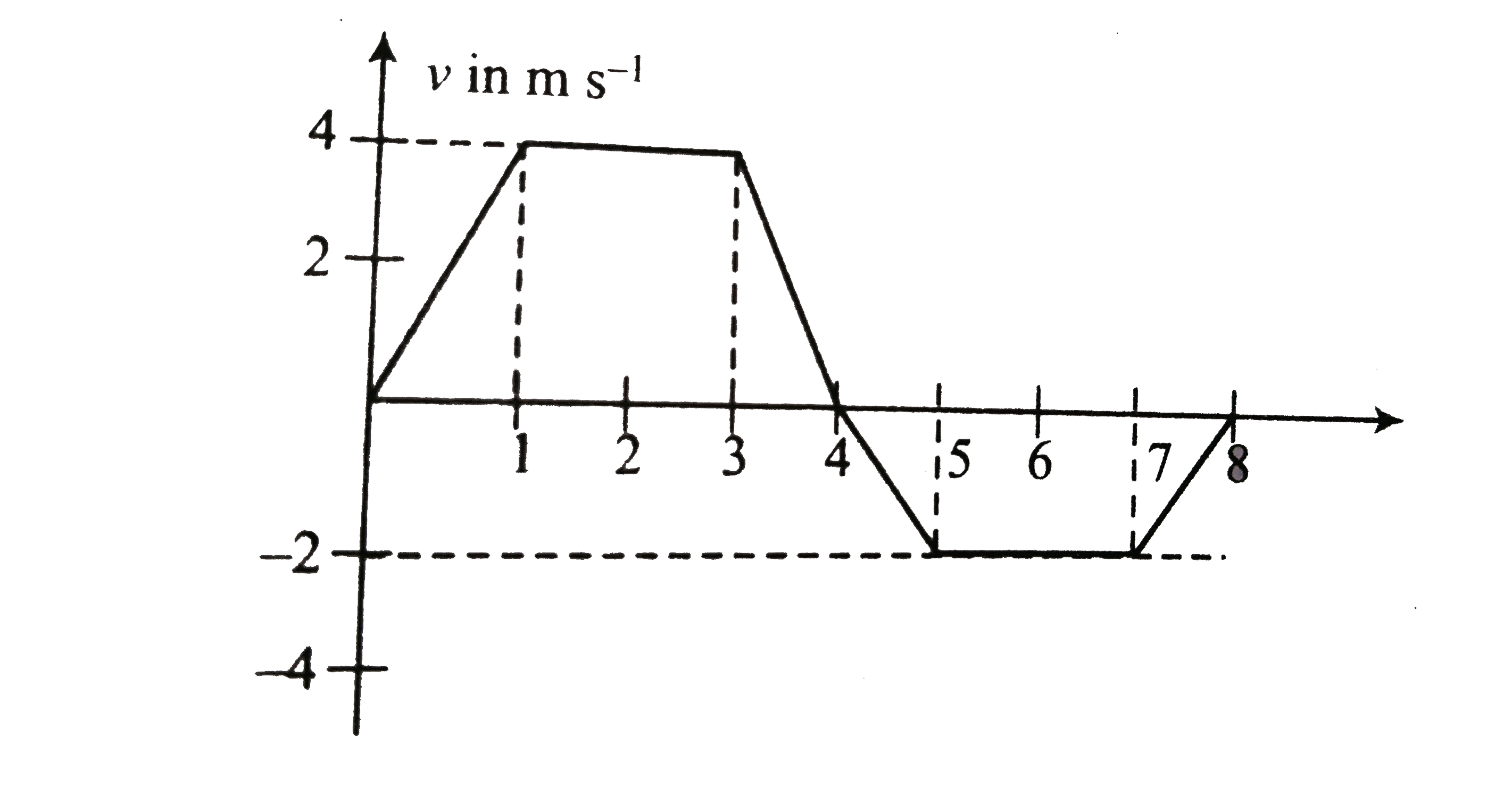 .
.
The distance of the particle from the origin after `8 s` is .
View SolutionThe velocity-time graph of a particle in straight line motion is veloity-time graph of a particle in straight line motion is shown in. The particle starts its motion from origin.
 .
.
The distance of the particle from the origin after `8 s` is .
View SolutionThe velocity-time graph of a particle in straight line motion is veloity-time graph of a particle in straight line motion is shown in. The particle starts its motion from origin.
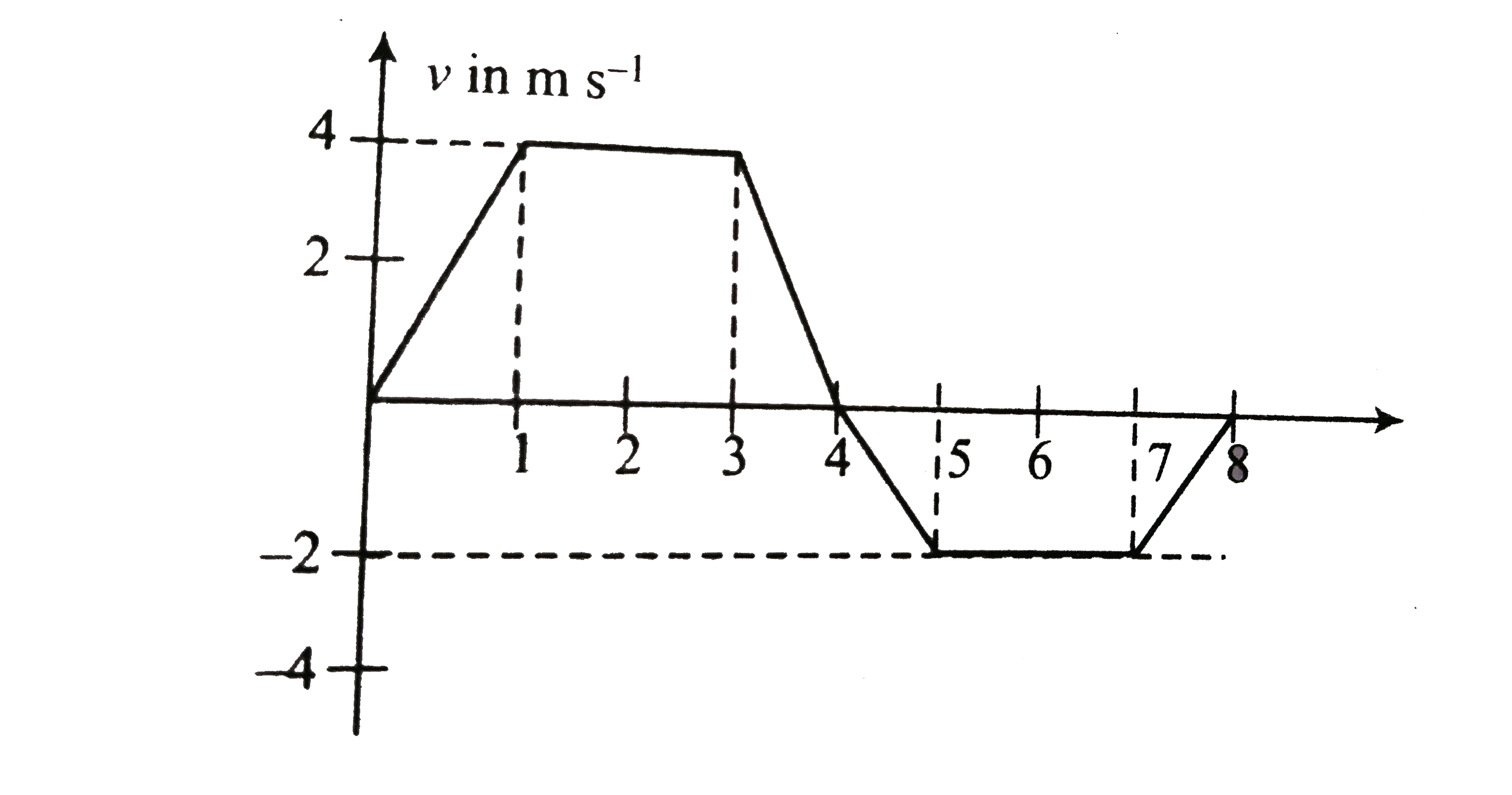 .
.
Find the average acceleration from `2 s` to `6 s`.
View SolutionThe velocity-time graph of a particle moving along a straight line is shown is . The rate of acceleration and deceleration is constant and it is equal to `5 m s^(-2)`. If the a average velocity during the motion is `20 m s^(-1)`, Then
 .
.
The value of `t` is.
View SolutionThe velocity-time graph of a particle moving along a straight line is shown is Fig. The rate of acceleration and deceleration is constant and it is equal to `5 m s^(-2)`. If the a average velocity during the motion is `20 m s^(-1)`, Then
 .
.
The maximum velocity of the particle is
View SolutionThe velocity-time graph of a particle moving along a straight line is shown is Fing. The rate of acceleration and deceleration is constant and it is equal to `5 m s^(-2)`. If the a average velocity during the motion is `20 m s^(-1)`, Then
 .
.
The distace travelled with uniform velcoty is .
View SolutionSundy the four graphs given below. Answer the follwing questions on the basis of these graphs.
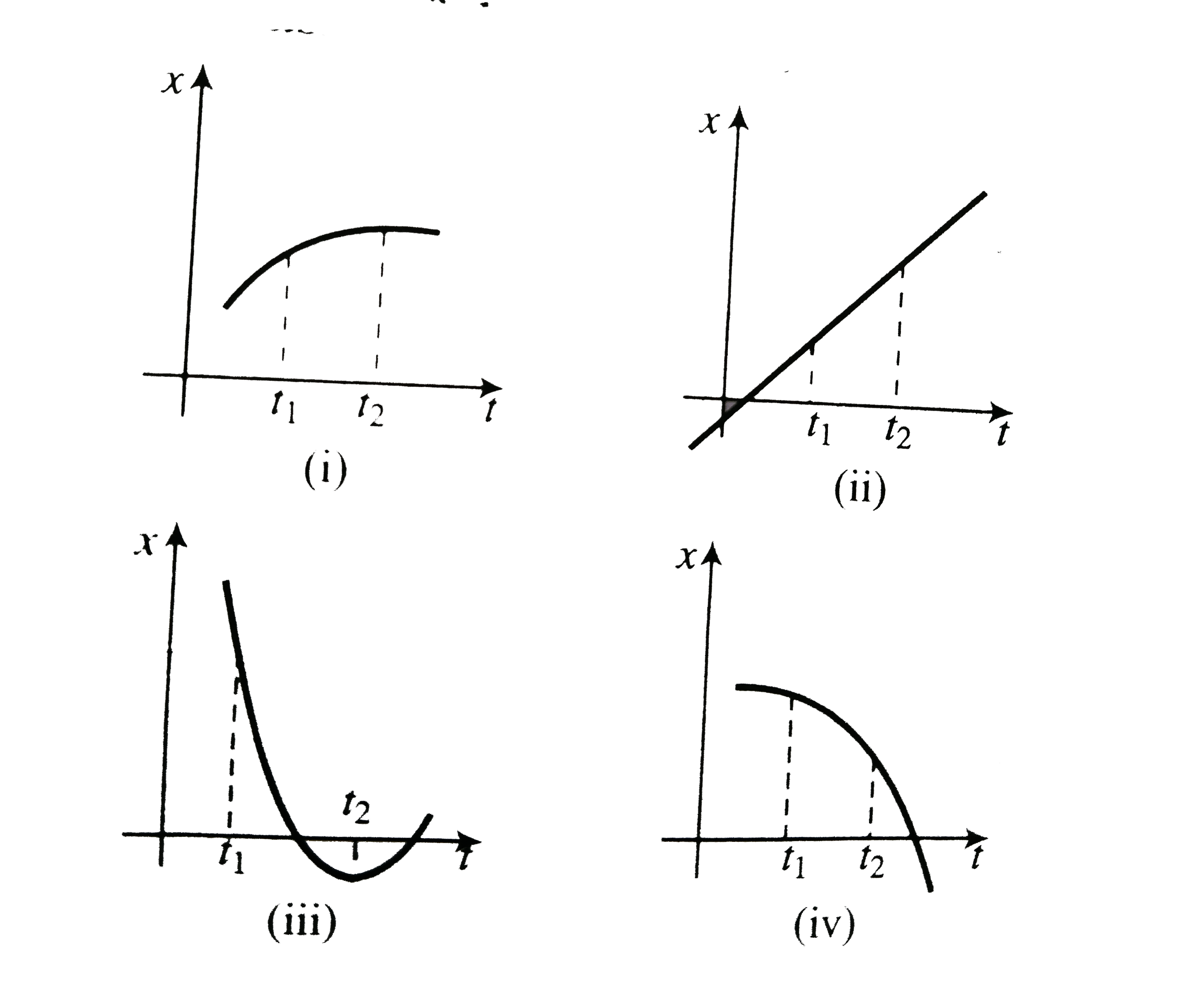
In which of the graghs, the particle has more magnitude of velocity at `t_(2)`,
View SolutionSundy the four graphs given below. Answer the follwing questions on the basis of these graphs.
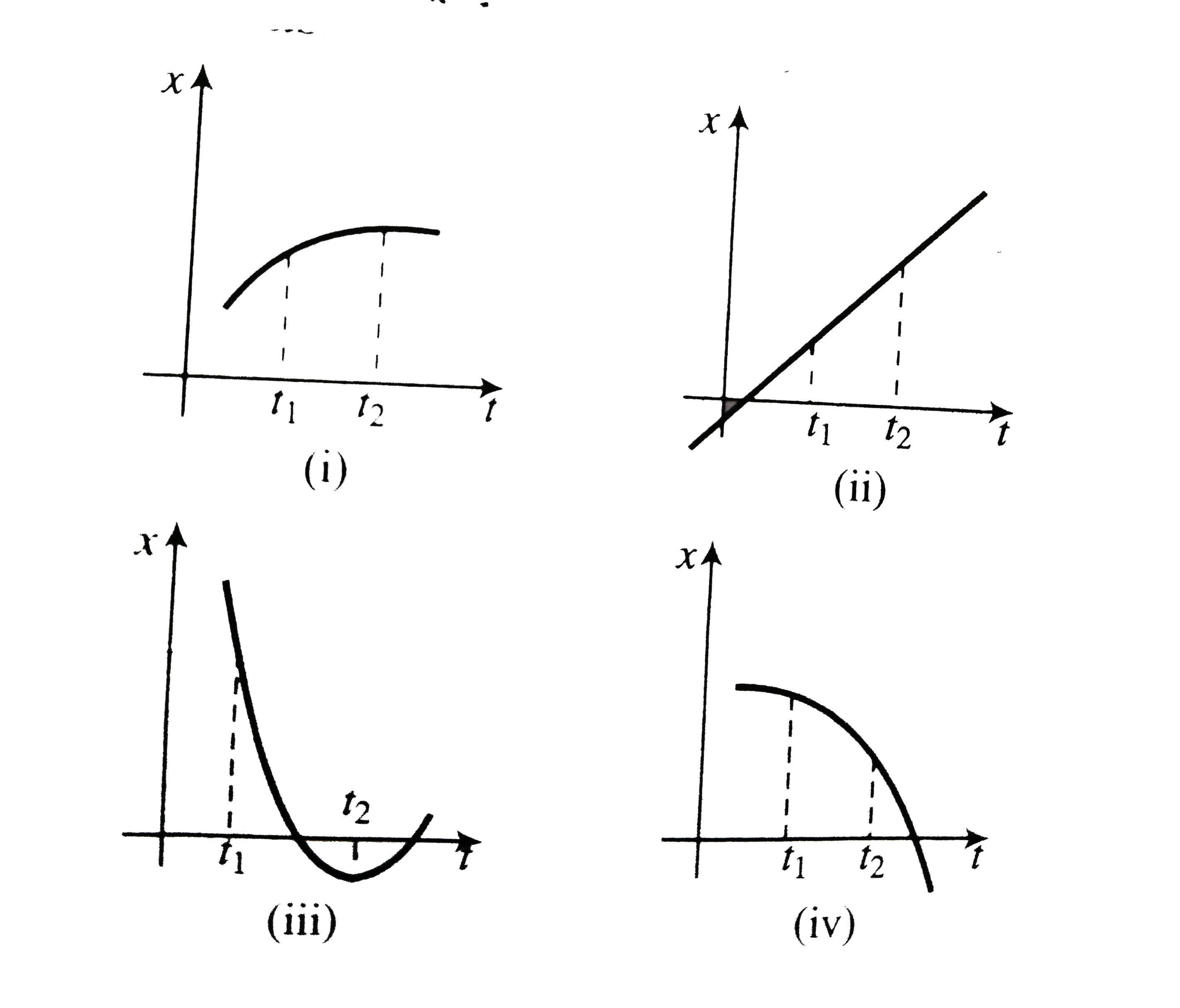
Acceleration of the particle is positive.
View SolutionStudy the following graph:
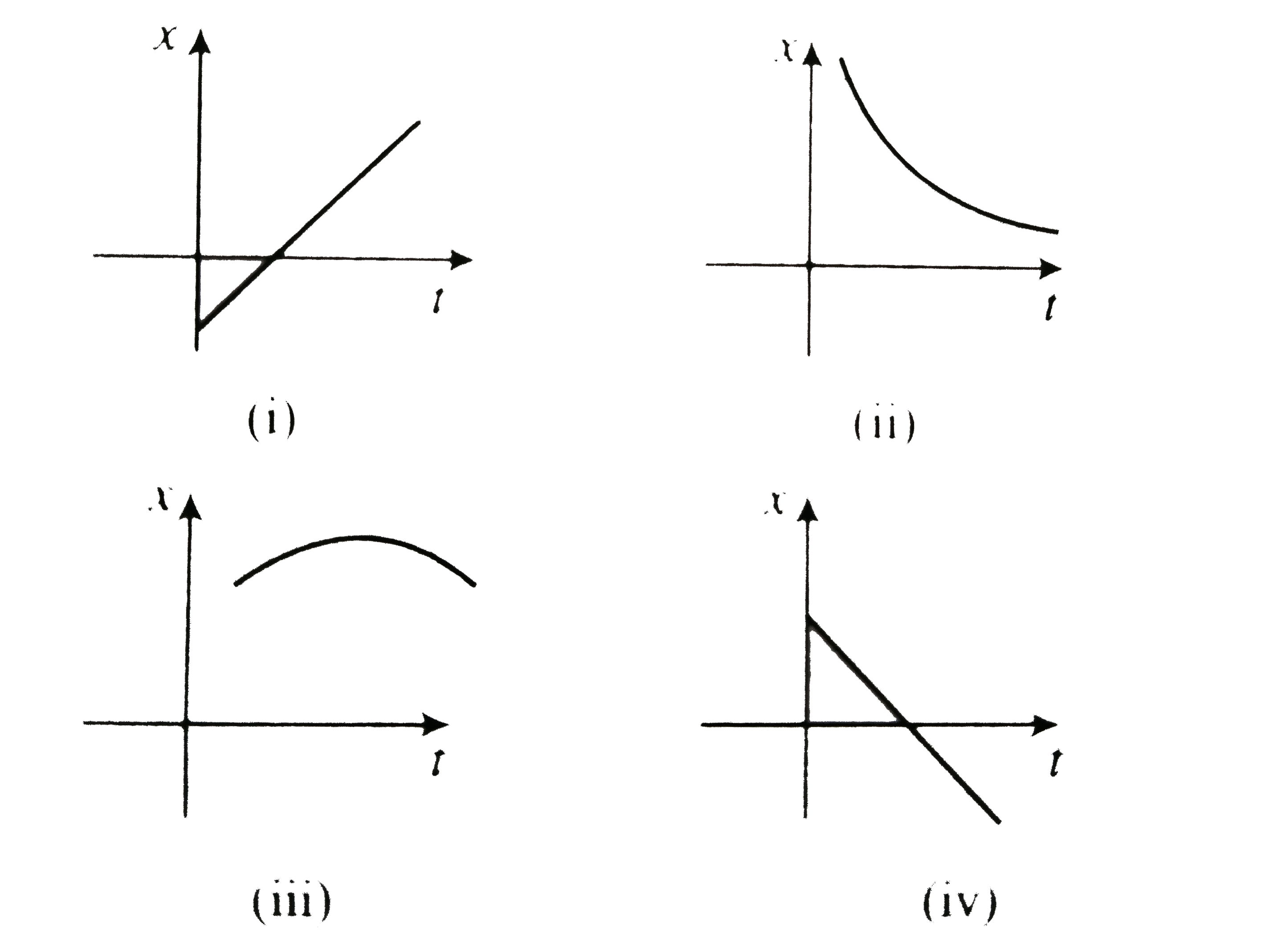
The particle is moving with constant speed .
View SolutionStudy the following graph:
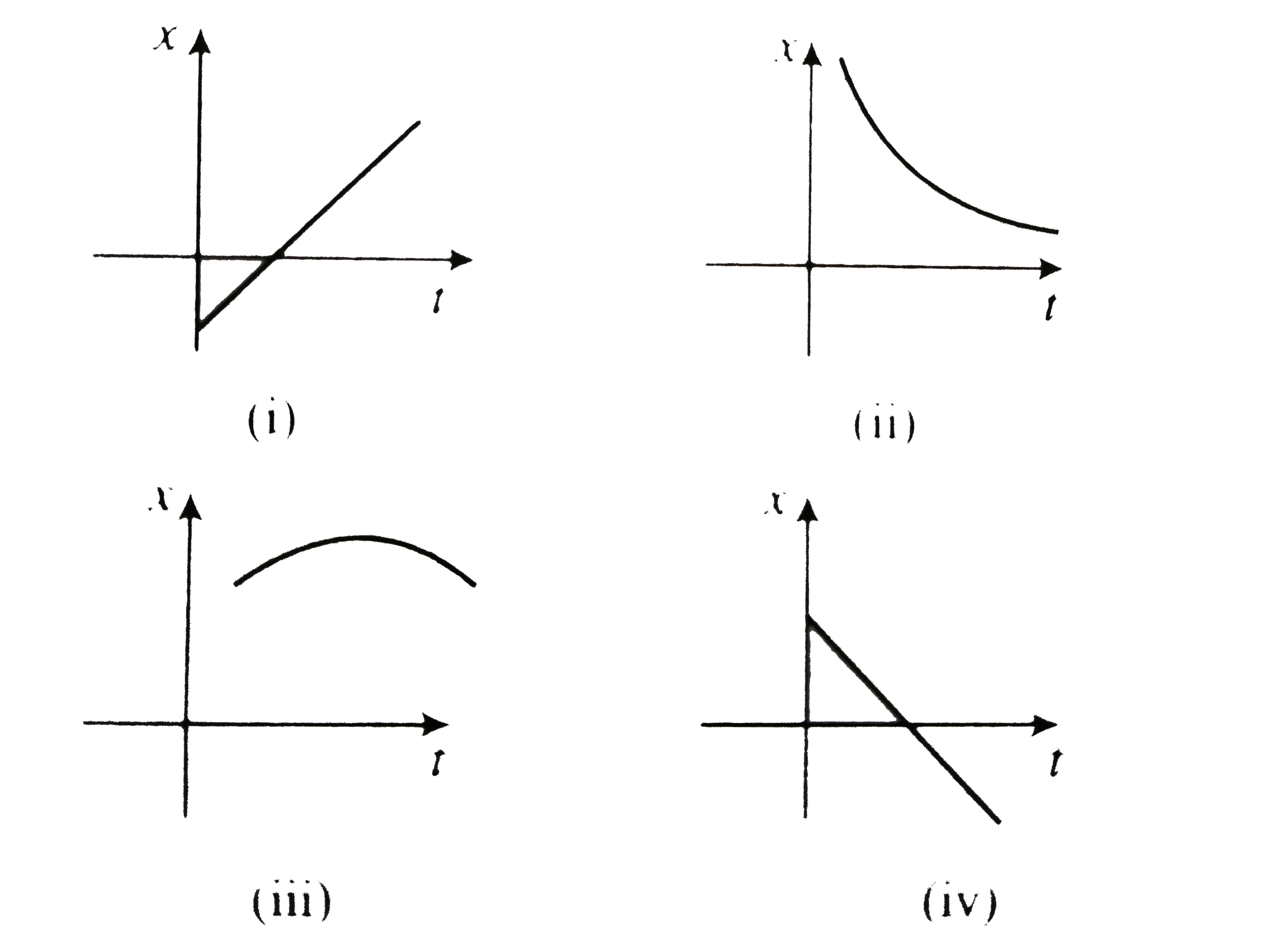
The particle has negative acceleration.
View Solution
Linked Comprehension questions and complete solutions for chapter KINEMATICS-1 of CENGAGE PHYSICS (HINGLISH) of Class 11